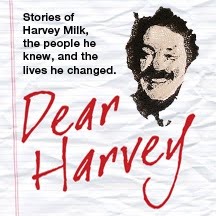Twinkie Defense.
What is it? Thirty years ago anyone in California would be able to answer that question without thinking, but now society's knowledge on Harvey Milk's death is minimized to what is fed through the film MILK. Here is an article describing what specifically the Twinkie Defense is and why such an absurdly titled event led to the production of violence now referred to as the 'White Night Riots'.
Myth of the 'Twinkie defense' (as written by Carol Pogash of the San Francisco Cronicle, November 23, 2003) :
Ask anyone who's heard of Dan White -- and there are fewer and fewer people who have -- how it was that the clean-cut, conservative San Francisco supervisor received such a light sentence in the shooting deaths of progressive San Francisco Mayor George Moscone and gay Supervisor Harvey Milk 25 years ago, and it brings an automatic response: the "Twinkie defense." The impressionable jury, they'll say, swallowed the defense contention that Dan White gobbled Twinkies, which blasted sugar through his arteries and drove him into a murderous frenzy. About as simple as: "Eat a Twinkie, commit a murder."
As Thursday's 25th anniversary of the killings approaches, what survives is a shared understanding of the gross miscarriage of justice: that an angry young man many thought should have received the death penalty instead was convicted of voluntary manslaughter and got a meager sentence of less than eight years (with time off for good behavior, he would end up serving only five years, one month and nine days).
The "Twinkie defense" is so ingrained in our culture that it appears in law dictionaries, in sociology textbooks, in college exams and in more than 2, 800 references on Google. Only a few of them call it what it is: a myth.
"I don't think Twinkies were ever mentioned in testimony," said chief defense attorney Douglas Schmidt, who recalls "HoHos and Ding Dongs," but no Twinkies. In fact, the cream-filled confections were mentioned, but only in passing. Junk food was an insignificant part of the defense. The matter was raised briefly in testimony by Marin psychiatrist Martin Blinder, one of five defense therapists. Today, the entire episode is characterized by Schmidt as "a throwaway witness . . . with a throwaway line.''
The main focus of the defense's case in May 1979 was diminished capacity -- that White had suffered from periodic bouts of depression, amounting to "a major mental illness." That, along with "the machinations of dirty politics at City Hall," White's co-counsel Stephen Scherr said in a recent interview, "drove him 'round the bend."
During his day on the stand, Blinder, a former mayor of San Anselmo and a onetime teacher at UCSF's medical school and at Hastings College of the Law, characterized White as his family's black sheep, a man with rigid values and locked-up emotions. In a recent interview, Blinder said his intent was to explore, "What is it that makes a good man kill?"
In his daylong accounting of how White's life "unraveled," one small aspect of something Blinder said -- "two minutes of a greater part of the day on the stand" -- was later turned into the irrational explanation for everything that came after. "Studies show," he said recently, "that if you have a general predisposition to bipolar mood swings, things you ingest can play a part." In the days leading up to the killings, the psychiatrist told the jury, White cast aside his normal habits and grew slovenly, quit working, shunned his wife, grew a stubble beard and rather than eat his healthful diet, indulged in Twinkies and Coke -- all symptoms, Blinder testified, of depression. The junk food, he said, only made White more depressed, which caused him to binge even more.
A 1979 San Francisco Examiner story on the anatomy of the White defense, written by Jim Wood, my late husband, cited the makeup of the conservative, mostly female jury, many with children the age of defendant (there were no gays and no African Americans). Wood pointed out that the defense had not challenged the facts, but had put on a psychiatric defense for the former cop and firefighter. White, the defense claimed, had acted in the heat of passion, not out of malice. In his depressive state, he had "snapped."
The gay community's agony spewed out onto the streets of San Francisco. During what came to be called the White Night riot, protestors set fire to police cars and stormed City Hall. The violence was in marked contrast to the day Moscone and Milk died. Then, a candlelight march flowed quietly and peacefully from the Castro district to City Hall.
All that many people remember about the case that still engenders such anger and passion is that jurors succumbed to the defense claim that a politician ate Twinkies and then executed the mayor and a fellow supervisor.
"America loves labels," said Dr. Alan Dundes, UC Berkeley professor of anthropology and folklore. He compares our belief in the "Twinkie defense" to the conviction that George Washington cut down the cherry tree. He didn't. Folklore trumps history.
"I don't care if the 'Twinkie defense' has any validity or not," he said. "People think it was a factor. And thinking makes it so."
























